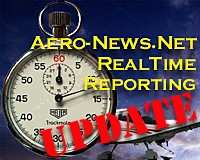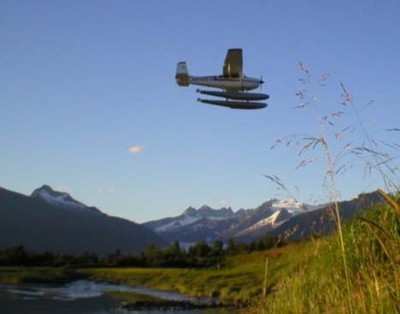Cessna 185 Went Down In 1966
 Harold Schoeffler just
couldn't let the wreckage go. It had obviously been there awhile,
judging from the rust and a tree having grown around the planes
foot pedals. As ANN reported, the
businessman stumbled onto the wreckage during a February hunting
trip near the Atchafalaya River in southern Louisiana.
Harold Schoeffler just
couldn't let the wreckage go. It had obviously been there awhile,
judging from the rust and a tree having grown around the planes
foot pedals. As ANN reported, the
businessman stumbled onto the wreckage during a February hunting
trip near the Atchafalaya River in southern Louisiana.
"I was beating the bushes for rabbits," Harold Schoeffler told
the Acadiana Advocate, when he came across the wreckage near a
canal. He says he found what appeared to be part of an airplane,
but he wasn't certain until he discovered the plane's fuselage and
floats 100 feet apart.
"The wings are broken off. The plane burned," Schoeffler said of
his February 11 discovery. "You can see the path of plane parts
where it came through the trees."
Schoeffler reported the crash site to the FAA, but there was no
record of a crash in that location. Subsequent news stories
produced several leads, some decades old, as to the potential
identity of the plane -- with many saying the wreckage was from an oil company plane that crashed on
takeoff in 1966.
Schoeffler was determined to solve the mystery. The situation
haunted him. He didn't believe the pilot could have survived.
Perhaps he could help bring closure to a grieving family.
So he returned to the crash site several weeks after his initial
discovery, to find that water levels had dropped sufficiently that
revealed even more of the aircraft. And more clues.
Schoeffler set to work with water, a sponge, a knife and
carburetor cleaner to scrub away mud and debris. He recovered the
letters 'BITS' on the door, and '7D' on the tail section.

After about an hour's worth of work, Schoeffler was convinced he
had enough information to solve the mystery. He had kept a list of
known crashes in the area, and the '7D' was a possible
match.
Schoeffler left the crash site, and moved to an area with a good
cell phone signal. He called his friend, Tommy Rogers Sr., who for
the past 55 years had worked as an executive vice president and
operations manager at Paul Fournet Air Service in Lafayette.
Mystery solved.
Rogers reported that a Cessna 185 amphibious airplane with tail
number N3237D experienced engine failure forcing the plane down at
11:30 a.m. on September 29, 1966. The Cessna was owned by WCS
Enterprises/Williams Diamond Bits of Lafayette.
Rogers identified the pilot as Charlie Lipscomb, who visited oil
rigs in the Atchafalaya Basin making sales calls.
"He was taking off from there and, I don't remember why, he
couldn't get out of the canal," Rogers said. "He hit the bank and
the plane bounced up on the bank. The wings, floats, wheels and
tail sheered off and the plane caught fire."
The plane went down about four miles from the site at Dead man's
Bayou, near Bayou Sorrel on the other side of the Atchafalaya River
from where Schoeffler found the wreckage.
"With all that destruction, pilot Charlie Linscomb walked away
uninjured," Shoeffler said last week. "It's just mind boggling to
look at that wreckage and think that anybody could have walked away
from it."

The WCS Enterprises' insurance company decided it was too
expensive to salvage the aircraft and it was abandoned, Rogers
said. They had painted a large yellow 'X' on the fuselage to mark
it as a known crash, but decades of exposure had removed any trace
of it.
Linscomb died about five years ago, Rogers said.
When the Louisiana oil patch was booming, 42 planes like the
Cessna 185 were based at Lafayette Regional Airport, Rogers said.
Pilots were also salesmen for the oil companies and made sales
calls to the rigs.
Even though Schoeffler did not uncover an unknown crash, he's
pleased with the results.
"We're pleased to come up with a final solution," he said.
 ANN's Daily Aero-Linx (04.16.24)
ANN's Daily Aero-Linx (04.16.24) Aero-News: Quote of the Day (04.16.24)
Aero-News: Quote of the Day (04.16.24) Airborne 04.10.24: SnF24!, A50 Heritage Reveal, HeliCycle!, Montaer MC-01
Airborne 04.10.24: SnF24!, A50 Heritage Reveal, HeliCycle!, Montaer MC-01 Airborne 04.12.24: SnF24!, G100UL Is Here, Holy Micro, Plane Tags
Airborne 04.12.24: SnF24!, G100UL Is Here, Holy Micro, Plane Tags Airborne-Flight Training 04.17.24: Feds Need Controllers, Spirit Delay, Redbird
Airborne-Flight Training 04.17.24: Feds Need Controllers, Spirit Delay, Redbird





